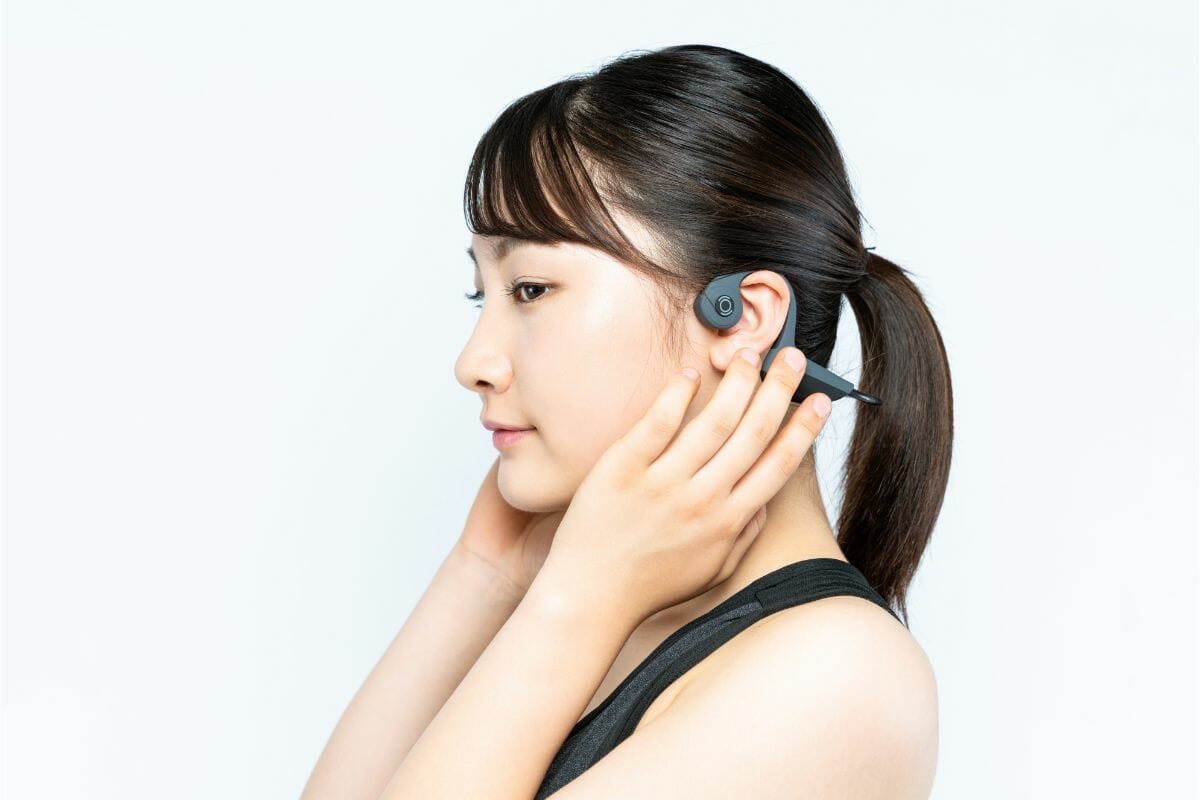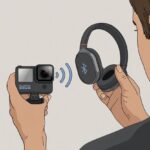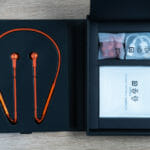As a fairly new technology, many people are curious about bone-conduction headphones and question their safety. Well, this guide will settle this once and for all.

In recent years, bone-conduction headphones have become incredibly popular. Thanks to its unique open-ear design, many manufacturers and advertisers market the products as solutions to the risks associated with wearing headphones outdoors and hearing loss.
However, how true are these claims? Working your way through a mountain of conflicting opinions can be confusing and tedious, especially when you want to get your hands on this technology as soon as possible.
If you’re stuck on which side to lean on. Then you no longer have to worry, with the help of this guide, you’ll discover all the answers to your questions and more. Let’s get started.
What Are Bone-Conduction Headphones?
The short answer is that bone-conduction headphones are wired or wireless headphones which sit on the temples of your head – here, you perceive sound through vibrations.
This technology was first introduced in the 18th century by the classical composer, Ludwig van Beethoven, who discovered that if you fasten a rod to a piano, you could “hear” the sound through clenched teeth. Since he was deaf, this was a breakthrough discovery at the time.
In the 1900s, the technology once again was re-looked at and proved itself once again when Hugo Gersback created the Osophone – the first bone-conduction hearing aid.
One of the benefits of bone-conduction headphones is that it enhances situational awareness – allowing you to be more conscious of your surroundings while outdoors.
Are Bone-Conduction Headphones Safe?
Since bone-conduction technology is relatively new, some consumers are skeptical of the devices. That said, bone conduction has a long history for those who experience certain types of hearing loss.
In fact, it is generally believed that Beethoven used the technology himself later in life after he experienced hearing loss. Here, he placed a metal rod between his teeth and the piano – allowing him to hear the vibrations of the music through his mouth.
That said, despite their long history of aiding those with hearing loss, this doesn’t mean they are safe or can even contribute to hearing loss – as some companies claim they do.
Even though many companies call bone-conduction headphones safe, this isn’t always the case. When looking at the safety of these headphones, it is incredibly complex.
While earbuds and headphones generally receive a bad reputation, the chances of hearing loss and their overall safety are dependent on how you’re using them. This goes the same when it comes to bone-conduction headphones.
Besides hearing loss, there is one way you can determine the safety of bone-conduction headphones. This is to do with their open-ear design – this enables users to be aware of their entire surroundings and thus promotes safety, allowing them to hear signs of danger.
When looking at the safety of bone-conduction safety, the final decision is up to you. However, knowing the positives and the negatives can help you make a decision.
Why You Shouldn’t Get Bone-Conduction Headphones?
When it comes to the bone-conduction nay-sayers, the main factor they focus on is isolation. However, this isn’t the sake of repetition, instead, it makes a notable difference.

By insulating your eardrums, you remove any outside clamor – allowing for a good seal that mitigates auditory masking.
In addition, since you aren’t using your eardrums, the accuracy of transmission becomes compromised. While you’ll somewhat understand the media playback, the quality of the audio becomes downgraded as a result.
Besides sound quality, these headphones can be uncomfortable. For instance, this is particularly apparent with the Aftershokz Trekz Titanium – one of the most popular models.
Here, the headphones rest on your cheekbones where the weight balances on a small section of your ears.
As such, when walking, it can be hard to keep a stable fit, especially when engaging in more vigorous activities, such as running.
Therefore, many people feel as if they are paying more for less. While the concept is novel, the real-life product isn’t quite as effective. That said, there are always two sides to a coin to keep in mind.
Why Should You Get Bone-Conduction Headphones?
Those in favor of bone-conduction headphones usually praise the technology for its safety reasons, as well as their beneficial properties to those who experience hearing loss.
When it comes to the former point, these headphones allow you to be more aware of your surroundings, especially when it comes to outdoor activities, like running.
Since these headphones don’t wrap around or touch your ear canal, you are able to hear all your surroundings, including pedestrians, cars, and other potential hazards.
In addition to this, if you experience hearing loss or use hearing aids, then bone-conduction headphones are ideal for you.
Since traditional headphones can interfere with or jostle your hearing aids, bone-construction headphones are a way around this.
Likewise, those who are deaf in one ear can enjoy radio sounds without having to use traditional in-ear devices. Therefore, providing listeners with a sense of hearing that they otherwise wouldn’t receive.
While audiophiles are unlikely to endorse such devices, the fact remains that they are beneficial for those experiencing hearing loss.
Therefore, to call them a gimmick would be oversimplifying this impressive technology. Likewise, to call them the best products to enter the headphone market would be an overstatement, too.
Final Thoughts
New technology is introduced every single day. While the technology behind bone-conduction headphones isn’t a new invention, the headphones themselves are.
Here, they take the vibration methods and transform them into headphones where you can listen to your music without interfering with your eardrums.
Although, many people are skeptical about this product – questioning its validity and safety. Regardless of what side you’re on, there is no doubting their impressiveness. Hopefully, this guide has informed you about the safety of bone-conduction headphones.
- Why do my Bluetooth headphones keep resetting? Solving the Mystery of Rebooting Ears - January 5, 2026
- Is WHOOP Worth It for Runners, Cyclists, and Weightlifters or Just Another Expensive Wrist Buddy? - January 5, 2026
- Best Fitness Trackers Under $200 That Won’t Make Your Wallet Sweat - January 4, 2026






